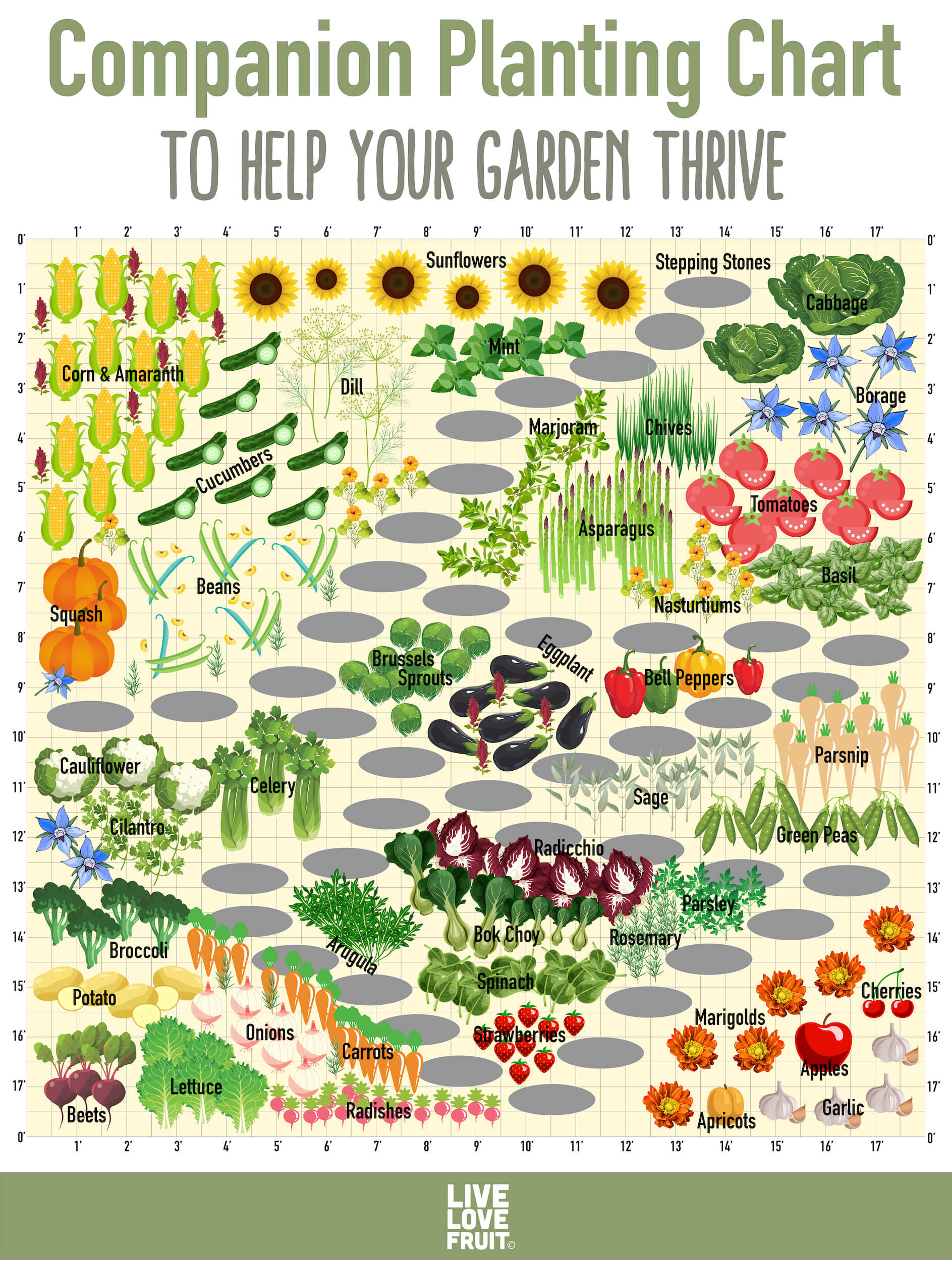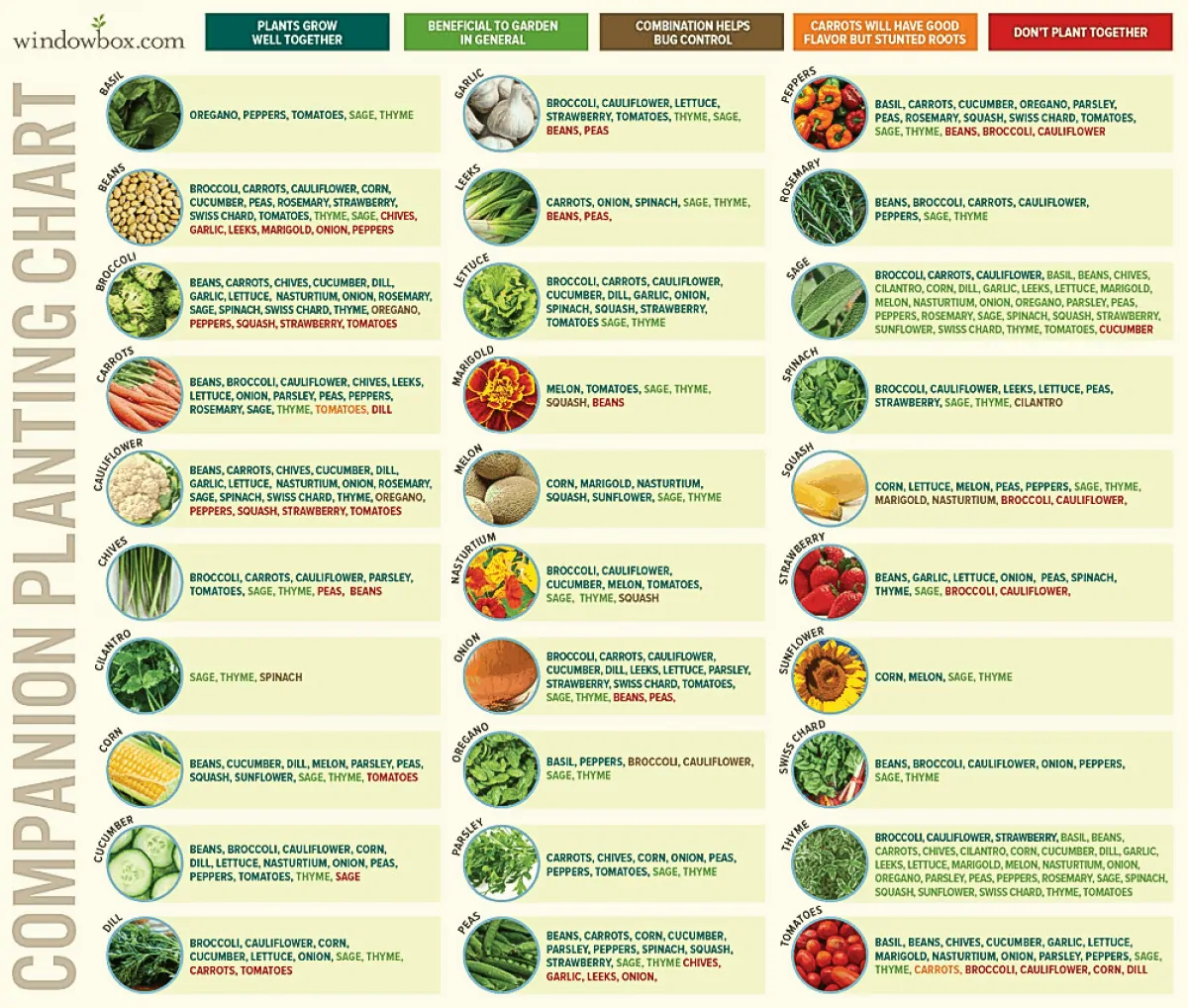Maximize Garden Health: Top Benefits of Companion Planting

Imagine your garden as a bustling community where each plant plays a unique role, contributing to the overall harmony and health of the ecosystem. This isn't just a dream; it's the reality of companion planting. By strategically pairing plants, you can create a thriving, sustainable garden that not only looks beautiful but also functions efficiently. Let's dive into the top benefits of companion planting in gardening and explore how this organic gardening technique can transform your green space.
What is Companion Planting?
Companion planting is the practice of growing different plants together for mutual benefit. It's like creating a symbiotic relationship where each plant supports the other, whether by providing nutrients, repelling pests, or improving soil health. This method of plant pairing has been used for centuries and is a cornerstone of sustainable gardening.
Benefits of Companion Planting in Gardening
Enhanced Soil Health
One of the primary benefits of companion planting is its positive impact on soil health. Certain plants, like legumes, can fix nitrogen in the soil, making it more fertile for other plants. For example, planting beans alongside corn can enrich the soil, ensuring that both plants thrive. This natural fertilization method reduces the need for chemical fertilizers, promoting a more organic gardening approach.
Pest Control
Garden pests can be a significant challenge, but companion planting offers a natural solution. Some plants act as natural repellents, keeping pests at bay. For instance, marigolds are known to deter nematodes, while garlic and chives can repel aphids. By strategically placing these plants, you can create a natural barrier that protects your garden without the use of harmful pesticides.
Improved Plant Growth
Companion planting can also enhance plant growth by providing essential nutrients and creating a supportive environment. For example, tall plants like sunflowers can provide shade for smaller plants, creating a microclimate that supports their growth. Similarly, deep-rooted plants can bring up nutrients from lower soil layers, making them available to shallow-rooted plants.
Crop Rotation and Disease Prevention
Crop rotation is a crucial aspect of sustainable gardening, and companion planting can complement this practice. By rotating crops and pairing them with beneficial companions, you can prevent the buildup of diseases and pests. This approach ensures that your garden remains healthy and productive year after year.
Aesthetic Appeal
Beyond the practical benefits, companion planting also adds to the aesthetic appeal of your garden. The diverse array of plants creates a visually stunning landscape, with various colors, textures, and heights. It's like painting a masterpiece with living canvases, where each plant contributes to the overall beauty.
How to Get Started with Companion Planting
Getting started with companion planting is easier than you might think. Here are some steps to help you begin:
Research Plant Compatibility
The first step is to research which plants are compatible with each other. Some plants are natural allies, while others can be detrimental when placed together. For example, tomatoes and basil are a classic pairing, as basil can improve the flavor of tomatoes and repel certain pests.
Plan Your Garden Layout
Once you've identified compatible plants, plan your garden layout. Consider the size, growth habits, and light requirements of each plant. Tall plants should be placed where they won't shade out smaller ones, and sun-loving plants should be positioned in areas with ample sunlight.
Monitor and Adjust
Companion planting is an ongoing process. Monitor your garden regularly to see how the plants are interacting. If you notice any issues, such as pest infestations or poor growth, make adjustments as needed. Gardening is a learning experience, and each season brings new insights.
Examples of Successful Companion Planting
The Three Sisters Method
One of the most famous examples of companion planting is the Three Sisters method, practiced by Native Americans. This technique involves planting corn, beans, and squash together. The corn provides a natural trellis for the beans to climb, the beans fix nitrogen in the soil, and the squash shades the soil, retaining moisture and suppressing weeds.
Tomatoes and Marigolds
Tomatoes and marigolds are another successful pairing. Marigolds contain thiopene, a substance that helps deter nematodes, which can be harmful to tomatoes. Additionally, marigolds add a burst of color to the garden, making it visually appealing.
Carrots and Radishes
Carrots and radishes make excellent companions. Radishes grow quickly and loosen the soil, making it easier for carrots to develop. This pairing also helps with pest control, as the strong scent of radishes can deter certain pests that might otherwise attack the carrots.
Conclusion
Companion planting is more than just a gardening technique; it's a philosophy that embraces the interconnectedness of nature. By understanding and utilizing the benefits of companion planting in gardening, you can create a thriving, sustainable ecosystem that is both beautiful and productive. So, why not give it a try? Your garden, and the environment, will thank you.
Ready to transform your garden? Click here to learn more about companion planting and start your journey towards a healthier, more vibrant green space.
FAQs
What are some common mistakes to avoid in companion planting? Common mistakes include not researching plant compatibility, overcrowding plants, and not considering the light and water requirements of each plant.
Can companion planting be used in small gardens? Yes, companion planting can be highly effective in small gardens. It allows you to maximize space by growing multiple plants in close proximity, each benefiting the other.
How does companion planting help with pest control? Companion planting helps with pest control by using plants that naturally repel pests. For example, marigolds can deter nematodes, and garlic can repel aphids.
What are some good plant pairings for a vegetable garden? Some good plant pairings for a vegetable garden include tomatoes and basil, carrots and radishes, and the Three Sisters method of corn, beans, and squash.
Is companion planting suitable for organic gardening? Yes, companion planting is highly suitable for organic gardening. It promotes natural pest control, improves soil health, and reduces the need for chemical fertilizers and pesticides.


0 Response to "Maximize Garden Health: Top Benefits of Companion Planting"
Post a Comment